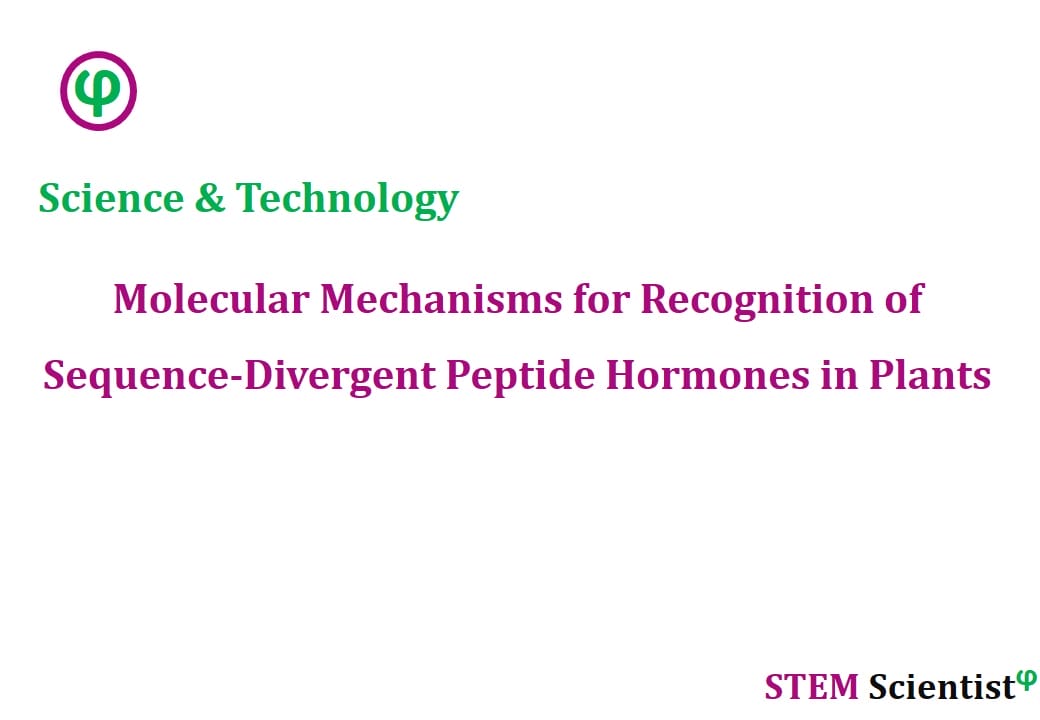
The following study was conducted by Scientists from University of Geneva; University of Lausanne, Switzerland. Study is published in Proceedings of the National Academy of Sciences Journal as detailed below.
Proceedings of the National Academy of Sciences (2020); 117(5): 2693-2703
Molecular Mechanism for the Recognition of Sequence-Divergent CIF Peptides by the Plant Receptor Kinases GSO1/SGN3 and GSO2
Significance
Plants have evolved unique membrane receptor kinases with extracellular leucine-rich repeat domains that regulate diverse developmental processes and that form the first layer of the plant immune system. Here it is shown that 2 sequence-related receptor kinases and their shape-complementary coreceptors selectively sense members of a small family of secreted peptide hormones to control formation of an important diffusion barrier in the plant root.
Abstract
Plants use leucine-rich repeat receptor kinases (LRR-RKs) to sense sequence diverse peptide hormones at the cell surface. A 3.0-Å crystal structure of the LRR-RK GSO1/SGN3 regulating Casparian strip formation in the endodermis reveals a large spiral-shaped ectodomain. The domain provides a binding platform for 21 amino acid CIF peptide ligands, which are tyrosine sulfated by the tyrosylprotein sulfotransferase TPST/SGN2. GSO1/SGN3 harbors a binding pocket for sulfotyrosine and makes extended backbone interactions with CIF2. Quantitative biochemical comparisons reveal that GSO1/SGN3–CIF2 represents one of the strongest receptor–ligand pairs known in plants. Multiple missense mutations are required to block CIF2 binding in vitro and GSO1/SGN3 function in vivo. Using structure-guided sequence analysis we uncover previously uncharacterized CIF peptides conserved among higher plants. Quantitative binding assays with known and novel CIFs suggest that the homologous LRR-RKs GSO1/SGN3 and GSO2 have evolved unique peptide binding properties to control different developmental processes. A quantitative biochemical interaction screen, a CIF peptide antagonist and genetic analyses together implicate SERK proteins as essential coreceptor kinases required for GSO1/SGN3 and GSO2 receptor activation. Our work provides a mechanistic framework for the recognition of sequence-divergent peptide hormones in plants.
Source:
Proceedings of the National Academy of Sciences
URL: https://www.pnas.org/content/117/5/2693
Citation:
Okuda, S., S. Fujita, et al. (2020). “Molecular mechanism for the recognition of sequence-divergent CIF peptides by the plant receptor kinases GSO1/SGN3 and GSO2.” Proceedings of the National Academy of Sciences 117(5): 2693-2703.


